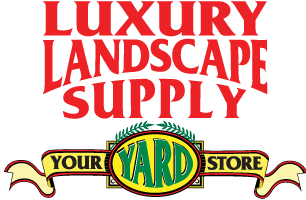Learn about our mulch to make a better choice for the perfect installation and most beautiful appearance!
Mulch is any material (organic or inorganic) covering the ground to retain moisture, moderate soil temperature, suppress weed growth and help reduce soil erosion.
Mulch retains moisture.
Mulch allows water to pass into the soil and slows the evaporation rate, conserving the moisture the plant receives.
Mulch moderates soil temperature.
Mulch at the proper thickness reduces the extremes of the soil temperature by keeping the soil cooler in the summer and warmer in the winter.
Mulch suppresses weeds.
Mulches can help reduce the germination and growth of many weeds, but contrary to our desires, mulches generally won't kill weeds.
Mulch reduces soil erosion.
Mulches can help reduce erosion by reducing the velocity and concentration of the water by distributing it over a broader area. Selecting an effective erosion control material is important, so come into our store and we can advise you on what would work for your situation. If we don't have it, we'll refer you to someone that does.
Other benefits from organic mulching.
Mulches will improve the soil structure over time, and will add nutrients to the soil as they decompose.
PROPER APPLICATION OF MULCH
Mulches should be spread approximately 3 inches thick on the soil between the planted material.
Avoid piling-up the mulch on the plant stems or tree trucks, or putting in more than 5 inches of mulch, this could cause stem rot and/or limit the plants intake of oxygen.
Correct installation. Mulch surrounds shrub.
Incorrect installation. Mulch is piled against the stem, covering lower branches.
Recommendations for mulch installation
- Because mulch colors and textures may change from batch to batch, buy enough mulch to do your area at the same time, you'll have a better chance of getting the same appearance. Wear old work clothes and shoes while handling our products to avoid stains.
- Put a tarp on your driveway if we are dumping mulch on it, it will reduce clean up (wash concrete with soap and stiff bristle broom). We don't necessarily recommend putting tarps down for gravels since you'll just rip it to shreds shoveling it up.
- Use the right tools to spread materials. Generally, pitch forks work best for shredded mulches and large grain shovels for chipped and nugget types of mulches. Flat shovels are best for gravel and soil products.
- Make sure you select the right mulch for your yard. If you have a lot of deciduous leaf litter or pine needles falling in the area, don't use chips or nugget mulches because you won't be able to rake or blow off the leaves very well.
- If you've got steep slopes, consider shredded mulch that has fibers that knit together and mat down. Don't put the mulch under a gutter down spout or in an area where erosion takes place due to water run-off.
- Don't put mulch up against the wood on your house. You must always leave your foundation exposed so you or your termite service can inspect for developing tube formations.
- Never pile mulch up on the stems of plants or trunks of trees, as this can cause rot. Keep the mulch thin (maybe only 1 inch or so thick) around the base of the plant.

